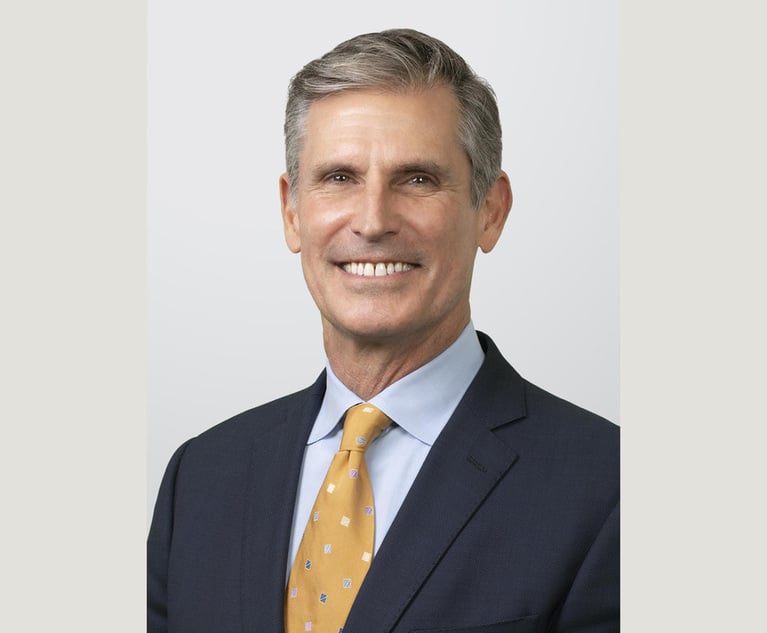Why Aren't Florida Law Firms Attracting More Millennials?
Less than one-third of the lawyers at large and midsize firms in cities across the state are millennials.
November 30, 2017 at 04:01 PM
4 minute read

This story is part of a series exploring how law firms and others in the legal industry are adapting to manage their millennial workers, from recruitment and real estate to training and technology and beyond. Read our overview here.
Millennials make up about only 31 percent of the lawyers at most of the biggest firms in seven of Florida's largest cities—a smaller number than the national average of 43 percent.
According to date collected by ALM Intelligence, millennials are now the largest generational  group of lawyers at large and midsize firms across the United States. At the national level, millennials (ages 18 to 36) outnumber the 33 percent of lawyers from Generation X (ages 37 to 52) at firms in the Am Law 200 and The National Law Journal's NLJ 500. They also outnumber the 22 percent of baby boomers, the data shows.
group of lawyers at large and midsize firms across the United States. At the national level, millennials (ages 18 to 36) outnumber the 33 percent of lawyers from Generation X (ages 37 to 52) at firms in the Am Law 200 and The National Law Journal's NLJ 500. They also outnumber the 22 percent of baby boomers, the data shows.
In Florida, however, millennials make up a smaller percentage—in part because some of the nation's larger firms have smaller outposts in the state. The largest firms tend to employ the greatest percentage of associates, and therefore millennials. Also, the data does not include Holland & Knight, one of the largest firms in the state.

Of the seven Florida cities included in the research, large to midsize firms in Miami employed the largest number of millennial lawyers—781—or 35 percent of the total number of lawyers at those firms. Their offices in Pensacola, which had a considerably smaller overall headcount, actually employed a larger percentage of millennials—36 percent. In Orlando, 29 percent of the lawyers in firms of that size are millennials.
At the large firms in Jacksonville, 34 percent of lawyers are millennials, while in Tampa, millennials make up 33 percent of the lawyers. In Naples, the proportion of millennials at larger firms is 28 percent.
The Role of the Legal Sector
Bridget Maguire, founder and CEO of Premier Legal Advantage, a legal recruiting firm that services the Am Law 200, said the difference in the proportion of millennials from one region of the country to another is driven at least in part by a region's predominant legal sector.

For instance, the smallest percentage of millennial lawyers in Florida—23 percent—is at firms in Tallahassee, the state capital. This is attributable at least in part to the fact that a considerable amount of government relations work is done there—a practice area for which firms tend to hire laterals with more experience or who have established contacts.
Another factor, according to Maguire, is that Florida is not a major deal center. Although an increasing number of big deals have been coming to South Florida, the kind of major deals where young lawyers gain experience, confidence, training, clients and direction are largely done in New York.
“The major money center cities are still the draw for people to develop their careers because there is a greater volume of work in New York that can subsidize the growth and development of a young attorney's practice,” Maguire said.
And then there is just size. The largest firms in terms of numbers of lawyers or profits per partner tend to have larger offices in key U.S. cities such as New York, Washington and Chicago. Those also tend to be the firms that have the highest proportion of millennials.
“While it's growing, the Miami legal market has a tendency to have offices that are on the smaller side when you compare them to offices in New York, Chicago and Washington,” Maguire said.
This content has been archived. It is available through our partners, LexisNexis® and Bloomberg Law.
To view this content, please continue to their sites.
Not a Lexis Subscriber?
Subscribe Now
Not a Bloomberg Law Subscriber?
Subscribe Now
NOT FOR REPRINT
© 2025 ALM Global, LLC, All Rights Reserved. Request academic re-use from www.copyright.com. All other uses, submit a request to [email protected]. For more information visit Asset & Logo Licensing.
You Might Like
View All
Holland & Knight Expands Corporate Practice in Texas With Former Greenberg Traurig Partner
3 minute read
South Florida Real Estate Lawyers See More Deals Flow, But Concerns Linger
6 minute read
Trending Stories
- 1NJ Jury Awards $4.5M After Woman Trips on Carpet
- 2Blake Lively Is Sued by Texas Crisis Specialist in Latest 'It Ends With Us' Lawsuit
- 3Pa. High Court to Decide Whether Flight in a High Crime Area Can Result in an Investigative Stop
- 4EB-5 Immigration Investor Program: a Win-Win Program, or Is It?
- 5People in the News—Feb. 6, 2025—Unruh Turner, Fox Rothschild
Who Got The Work
J. Brugh Lower of Gibbons has entered an appearance for industrial equipment supplier Devco Corporation in a pending trademark infringement lawsuit. The suit, accusing the defendant of selling knock-off Graco products, was filed Dec. 18 in New Jersey District Court by Rivkin Radler on behalf of Graco Inc. and Graco Minnesota. The case, assigned to U.S. District Judge Zahid N. Quraishi, is 3:24-cv-11294, Graco Inc. et al v. Devco Corporation.
Who Got The Work
Rebecca Maller-Stein and Kent A. Yalowitz of Arnold & Porter Kaye Scholer have entered their appearances for Hanaco Venture Capital and its executives, Lior Prosor and David Frankel, in a pending securities lawsuit. The action, filed on Dec. 24 in New York Southern District Court by Zell, Aron & Co. on behalf of Goldeneye Advisors, accuses the defendants of negligently and fraudulently managing the plaintiff's $1 million investment. The case, assigned to U.S. District Judge Vernon S. Broderick, is 1:24-cv-09918, Goldeneye Advisors, LLC v. Hanaco Venture Capital, Ltd. et al.
Who Got The Work
Attorneys from A&O Shearman has stepped in as defense counsel for Toronto-Dominion Bank and other defendants in a pending securities class action. The suit, filed Dec. 11 in New York Southern District Court by Bleichmar Fonti & Auld, accuses the defendants of concealing the bank's 'pervasive' deficiencies in regards to its compliance with the Bank Secrecy Act and the quality of its anti-money laundering controls. The case, assigned to U.S. District Judge Arun Subramanian, is 1:24-cv-09445, Gonzalez v. The Toronto-Dominion Bank et al.
Who Got The Work
Crown Castle International, a Pennsylvania company providing shared communications infrastructure, has turned to Luke D. Wolf of Gordon Rees Scully Mansukhani to fend off a pending breach-of-contract lawsuit. The court action, filed Nov. 25 in Michigan Eastern District Court by Hooper Hathaway PC on behalf of The Town Residences LLC, accuses Crown Castle of failing to transfer approximately $30,000 in utility payments from T-Mobile in breach of a roof-top lease and assignment agreement. The case, assigned to U.S. District Judge Susan K. Declercq, is 2:24-cv-13131, The Town Residences LLC v. T-Mobile US, Inc. et al.
Who Got The Work
Wilfred P. Coronato and Daniel M. Schwartz of McCarter & English have stepped in as defense counsel to Electrolux Home Products Inc. in a pending product liability lawsuit. The court action, filed Nov. 26 in New York Eastern District Court by Poulos Lopiccolo PC and Nagel Rice LLP on behalf of David Stern, alleges that the defendant's refrigerators’ drawers and shelving repeatedly break and fall apart within months after purchase. The case, assigned to U.S. District Judge Joan M. Azrack, is 2:24-cv-08204, Stern v. Electrolux Home Products, Inc.







